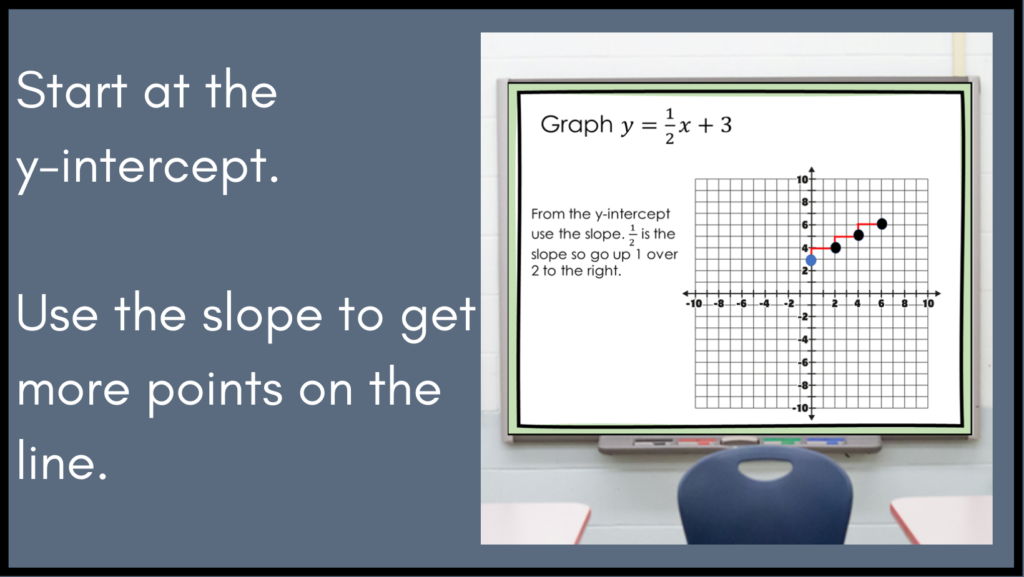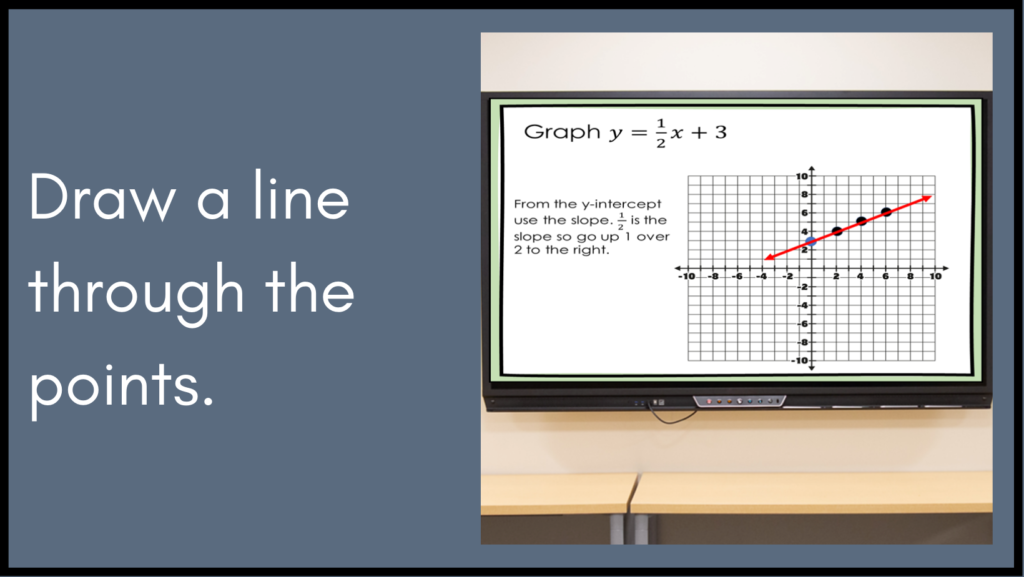Understanding the basics of graphing linear equations in slope-intercept form is a critical component of math learning. Here are some strategies for teaching this topic!
Graphing linear equations in slope-intercept form is an important foundational skill for math students. With the right strategies, teachers can make this process easier and more engaging for their students. Here are some tips for teaching graphing linear equations in slope-intercept form.
Review Slope and y-intercept Before Graphing
One of the most important steps in teaching graphing linear equations in slope-intercept form is to review slope and y-intercept. Spending time identifying and defining “slope” and “y-intercept” will provide students with a strong foundation for success when they move on to graphing linear equations. You also need to teach the slope-intercept form of a linear equation and be sure students understand how to find the slope and the y-intercept in the equation.
Check out the blog How to Teach Slope for help teaching slope.
Teaching Students to Graph Lines in Slope-Intercept Form
When teaching graphing a line in slope-intercept form it is important to have a coordinate plane that the class can see and that you can write on. You can use a PowerPoint or a Google Slide to display a graph the class can see.
Start off teaching how to graph by putting an equation in slope intercept form on the board, like y =1/2 x+3. Start off by having students identify the y-intercept. Emphasize that you need a point to start the graph with and the y-intercept is that point. Have students tell you what the y-intercept is (3). Talk about what that means and where it is located on the graph. Emphasize that the y-intercept is where the line crosses the y-axis. Point out the 3 on the y-axis and put a mark there. Now we have the starting point.

Now that we have a starting point, use the slope to graph the line from that point. Knowing the sign of the slope is an important part of graphing a line. The slope is ½. It is positive. Remember slope is rise over run. When students first start graphing use the sign to determine if the line goes up or down(rise). The top number(numerator) tells you how many units to go up or down. The bottom number (denominator) tells you how many units to go over. Additionally, if you use the sign to determine the rise (up or down) you must go to the right for the run. Use the slope to get 3 or 4 points on the line. Last plot the points and draw a line through the points.
Once students have mastered graphing lines using the sign for rise (positive up and negative down, right for run) you can practice graphing to the left. To graph to the left, do the opposite of graphing to the right. For example, up 3 and right 2 (3/2) would be down 3 and left 2 (-3/-2). In either case the slope is positive 3/2.
Check out our Slope-Intercept Unit for slope-intercept lessons.

Practice Graphing Linear Equations in Slope-Intercept Form
Guide students through each step of graphing by doing several examples. After providing students with examples of how to graph linear equations in slope-intercept form, the next step is to involve them in guided practice activities. Start by providing easy equations that can be graphed using the slope and y-intercept. A great tool to use is a dry erase graph board. This way as students are graphing lines you can quickly see any mistakes. You can buy dry erase boards or make your own by laminating a coordinate plane. Once students have mastered graphing using the slope and y-intercept you can give them lines where the slope and y-intercept are not obvious (zero y-intercept, horizonal and vertical lines).
Conclusion
Graphing linear equations can be confusing for students. Make sure you give students plenty of practice. Assess students and reteach those who need it. For students who are ready you can show them how to graph linear equations in multiple forms. Show how a point-slope equation and standard form equation can be transformed into an equation in slope-intercept form and graph it.
Get this free Graphing a Line Using Slope Practice sheet by clicking below.





